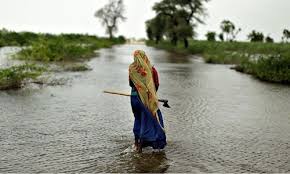Climate change impact on Pakistan cost Pakistan $3.8bn

Alarms bells have rung as speakers at a recent seminar, “Disaster Resilient Pakistan” organized by the National Disaster Management Authority (NDMA) have raised voices to avert 2022-like floods this monsoon season. The Pakistan Meteorological Department (PDM) has predicted above-normal rains in the country.
Besides extreme weather, torrential and unseasonal rains are also clear signs of climate change. April 24 was the wettest month in Pakistan in 6 decades when the country saw significantly above-average rainfall and lightning leading to loss of land and life.
Pakistan ranks among the ten most vulnerable countries in the world to climate change despite accounting for only 0.9 percent of global greenhouse gas (GHG) emissions. The economic survey of Pakistan 2024-25 mentions unpredictable weather patterns, resulting in flash floods, droughts, glacial lake outbursts, intense heat waves, and erratic rainfall as destructive effects of climate change.

The survey has highlighted some key striking impacts of climate change in the country. The annual expected damage from riverine floods is projected to surge by at least around 47 percent by 2050. As for heatwaves, the fraction of the population exposed yearly is expected to increase by at least 32 percent by 2050. Moreover, labor productivity is projected to decline across the board because of escalating heat stress by around 7 percent. These changes in the climate over the years have also been impacting agriculture adversely.
The Economic Survey of Pakistan 2023-24 points out that climate change will lower agriculture performance with annual mean wheat yield declining by at least one percent by 2050. Air and water pollution is another area that will aggravate human health especially those living in vulnerable areas.





